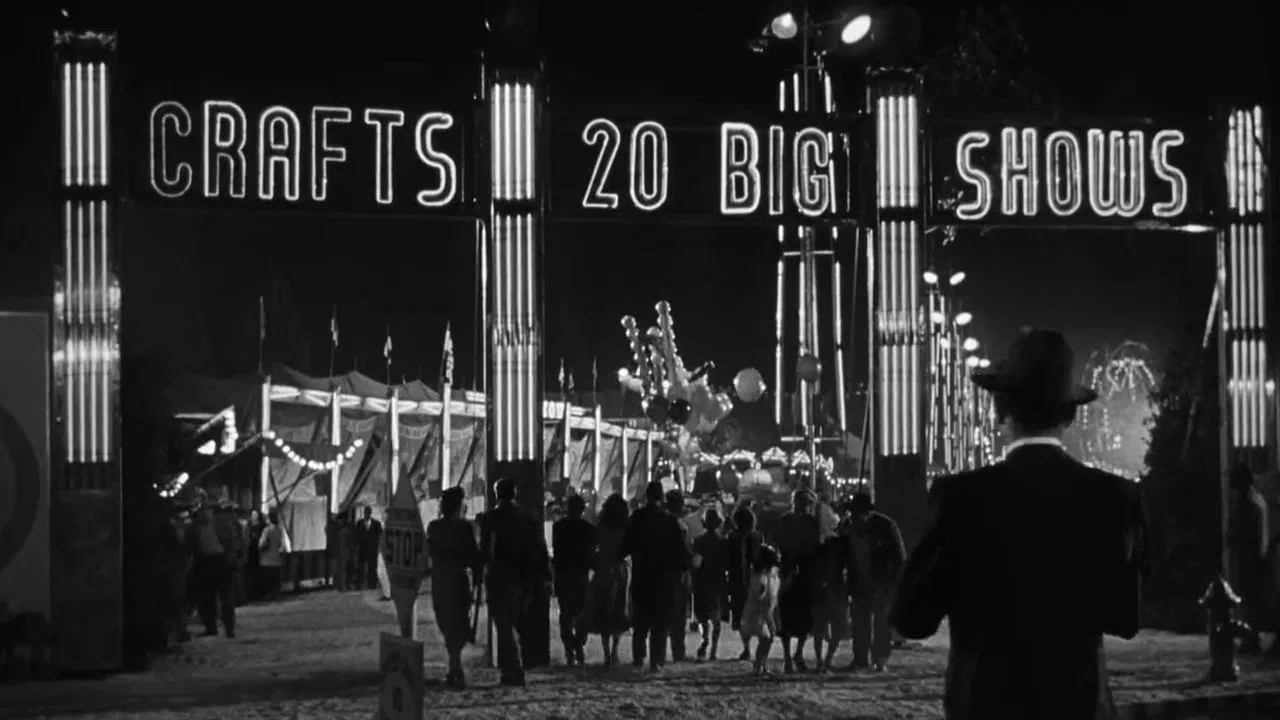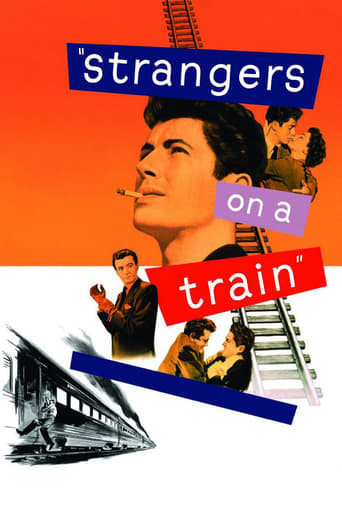

Wonderful character development!
... View MoreThe greatest movie ever made..!
... View Morea film so unique, intoxicating and bizarre that it not only demands another viewing, but is also forgivable as a satirical comedy where the jokes eventually take the back seat.
... View MoreThe story, direction, characters, and writing/dialogue is akin to taking a tranquilizer shot to the neck, but everything else was so well done.
... View MoreI've only seen a handful of his films, so I'm not a Hitchcock expert. Whenever I see a top ten Hitchcock films or something like that, this movie never gets mentioned, which boggles my mind. As much as I love psycho, this movie is just better in almost every way. It's also sure as hell better than the birds. In rope, I really was displeased with Farley Granger, but this film flipped my perception of him on its head. 9/10
... View MoreIf there was an Oscar category for making zero sense what so ever this Hitchcock dud should be a sure winner.A list of plot absurdities: 1. What if the hero had a solid alibi? If an alibi was threatening the plan, how the antagonist secured that the hero lacks an alibi before executing murder #1? 2. Actually an alibi should be essential in a murder exchange scheme otherwise there was no need for the exchange; also once the antagonist executes murder #1 the hero should be free from police scrutiny to execute murder #2 and that necessitates an alibi. But another compelling enforcement mechanism of the deal would be needed. Threatening to plant the lighter does not count as a viable plan because (a) it was obtained by the antagonist by accident, and (b) the hero could notify the police that his framing was underway. Either way you cut it, it makes zero sense. 3. Convenient but implausible doppelganger pair sister- in- law / wife. But what is the purpose anyway? So that the antagonist has a fainting spell in the middle of an absurdly implausible strangulation play acting in a high society party? major "what the heck?" moment 4. Play-tennis-and-win-quickly as part of strategy to rush to prevent incrimination? Ridiculous 5. Police not suspecting 2 boyfriends of victim; insane 6. Police not learning that 3rd man was spotted by boyfriends and crew + description of man not matching hero; more insane 7. Hero (if not an idiot) should have worked with police to trap antagonist 8. Merry go round that can develop deadly speeds or does not have a remote fail-safe switch. Hmmmm. 9. Shooting the merry-go- round without any reason whatsoever while said merry-go-round is full of innocent bystanders, especially children. Most absurd single thing in the movie. Maybe of the decade as far as stupid plots go. 10. Crawling under speeding merry-go-round instead of cutting power supply from a safe distance. Crazy. 11. By the way how the heck did they film and light the crawl? And using a civilian to do a deadly stunt instead of a stuntman? What were they thinking? 12. What would be justification to the police of antagonist for trying to kill hero on the merry-go-round? how the antagonist would justify even being at the park? 13. The antagonist trying to incriminate the hero while dying by absurdly denying possession of lighter instead of saying something like "I did what you asked me to do and killed your wife; if you should have kept your part of the deal as we had agreed we would be both fine now". That statement would have been impossible to refute in a court of law and would likely be sufficient evidence to convict.Overall, an intellectually insulting film viewing experience...
... View MoreThere are intellectual thrillers and then there are Alfred Hitchcock's intellectual thrillers! Being the guy that invented the entire genre, the famous director tries and produces one of his best works in a intertwined story about a perfect murder scheme created by the random meeting in a train. Basic plot so simple that it's genius will go on to produce some of the genre's best concepts and a dramatic finale that will justify the director's reputation for making immaculate crime stories for the big screen. Strangers on a train" is a great movie in any era, a perfect crime story that stood the test of time and a homework for the generations of movie creators that followed it.
... View MoreCertainly, not a great many films made two thirds of a century ago hold up under scrutiny in 2017. If my memory serves me, I first saw this 1951 Hitchcock "Classic" on TV at age 12 or 13. Shame on me for making that fatal mistake of setting my expectation level for a second viewing at "10". My best recommendation for those of you who just might decide to see it for the first time: It is an engrossing character study, (Robert Walker as Bruno Anthony) but falls somewhat short on many other levels, especially when compared to a number of other Hitchcock works. Walker's portrayal of an obsessive sociopathic socialite, although intense, gripping and intriguing, strikes me as very demanding in relation to the 2017 viewer's Suspension of Disbelief. An interesting footnote This was Walker's penultimate film. He died just before completing his next and last project, "My Son John". Evidently, like the character he portrayed, Walker also was plagued by a number of his own demons. If you crave more details, you can get them here on IMDb. The very best thing STRANGERS has going for it, aside from the aforementioned stellar performance, is the intriguing central premise of the film itself. From the onset, Hitchcock seems keenly aware of this, perhaps overplaying his hand on this point as the film approaches its climax. Without crossing the Spoiler Details threshold, perhaps my biggest criticism of the movie is its final minutes. Visually, a crucial scene just does not hold up to our present day CGI sensibilities. To use an appropriate colloquialism, one scene is really "hokey"! All of which, again, taxed my Suspension of Disbelief to the breaking point. So, don't set your expectations extremely high and the film will be well worth your while.9*....ENJOY!/DISFRUTELA! Any comments, questions or observations, in English o en Español, are most welcome!.....
... View More